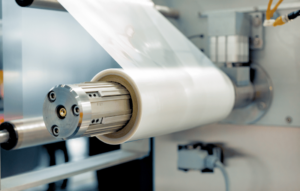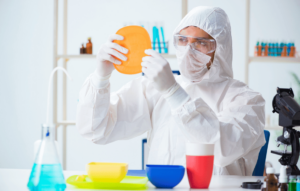So many of us start our day with a steaming cup of coffee. Each morning, millions of people fill their homes with a familiar aroma that offers promises of a burst of energy and feelings of vitality. For so many people across the world, this daily ritual is a comforting constant, but what if this beloved routine harbored a hidden danger? Coffee makers, ubiquitous in households and offices alike, might be quietly contributing to a serious health issue.
comforting constant, but what if this beloved routine harbored a hidden danger? Coffee makers, ubiquitous in households and offices alike, might be quietly contributing to a serious health issue.
Experts have recently uncovered that the plastics used in many coffee makers can release harmful chemicals and microplastics when heated. These chemicals, including BPA and phthalates, are known endocrine disruptors, meaning they can interfere with our hormonal systems. The implications are far-reaching, potentially affecting everything from our reproductive health to our developmental processes.
In this blog, we’ll lay out the surprising sources of these toxins in coffee makers, the science behind how they disrupt our hormones, and the broader implications for both our health and the environment. By the end, you’ll have knowledge to make more informed choices about your coffee maker and contribute to a healthier future. So, grab your cup of coffee (or maybe hold off for a moment), and let’s explore this issue together.
Popularity of Coffee
Coffee is more than just a beverage; it’s a global phenomenon. From bustling urban cafes to quiet suburban kitchens, coffee consumption is a daily ritual for millions. According to the National Coffee Association, over 60% of Americans drink coffee every day, with the average coffee drinker consuming three cups daily. This widespread love for coffee has made coffee makers a staple in homes and workplaces worldwide.

Types of Coffee Makers
The variety of coffee makers available today is vast, catering to many different preferences and lifestyles. Traditional drip coffee makers remain popular for their simplicity and ability to brew large quantities. Single-serve machines, like Keurig and Nespresso, have surged in popularity over the past few years due to their convenience and speed. Espresso machines, favored by hardcore coffee enthusiasts, offer a more specialized brewing process for a rich and robust flavor. While each type of coffee maker has its unique appeal, most share a common feature: plastic components.
These plastic parts, found in water reservoirs, filter baskets, and tubing, are integral to the design and function of many coffee makers. Unfortunately, these components pose a hidden risk, as they can leach harmful chemicals into the coffee, especially when exposed to high temperatures.
Understanding the Chemicals Involved
Plastic Components
Many coffee makers on the market today incorporate plastic components in their designs. These parts include, as mentioned above, water reservoirs, filter baskets, and internal tubing. Common plastics used in these components are known to contain chemicals such as Bisphenol A (BPA) and phthalates, which are widely recognized for their potential health risks. BPA, used to harden plastics, and phthalates, used to make plastics flexible, are both prevalent in consumer products, including those found in coffee makers. 
Chemical Leaching
The primary concern with these plastic components is the process of chemical leaching. When plastics are heated, as they are during the coffee brewing process, they can release chemicals into the surrounding environment — in this case, your coffee. The higher the temperature and the longer the exposure, the greater the potential for these chemicals to leach out. As hot water passes through the plastic parts of the coffee maker, it can carry traces of BPA and phthalates, which then end up in your cup.
Health Risks
The health risks associated with BPA and phthalates are well-documented. These chemicals are classified as endocrine disruptors, meaning they can interfere with the body’s hormonal system. BPA, for example, can mimic estrogen, a hormone critical to many bodily functions. This disruption can lead to a range of health issues, including reproductive problems, developmental delays in children, metabolic issues, and even increased risk of certain cancers. Phthalates have been linked to similar health concerns, including respiratory problems, skin irritations, and further hormone-related disorders.
Understanding the chemicals involved and the process by which they contaminate our coffee is crucial. It highlights the need for greater scrutiny of the materials used in our everyday appliances and underscores the importance of making informed choices to protect our health.
The Science Behind Hormone Disruption
The endocrine system is a complex network of glands and organs that produce, store, and secrete hormones. These hormones act as chemical messengers, regulating vital functions such as growth, metabolism, reproduction, and mood. Key players in this system include the thyroid gland, adrenal glands, pituitary gland, and reproductive organs. Proper functioning of the endocrine system is essential for maintaining homeostasis and overall health. 
Impact of Disruptors
Endocrine disruptors, like BPA and phthalates found in coffee maker plastics, can interfere with the normal functioning of the endocrine system in several ways. These chemicals can mimic natural hormones, bind to hormone receptors, and either block or trigger inappropriate responses. For instance, BPA can mimic estrogen, leading to overstimulation of estrogen receptors. This can result in a range of health issues, from developmental and reproductive problems to increased susceptibility to cancers such as breast and prostate cancer.
Phthalates, on the other hand, can interfere with the production and regulation of testosterone, a critical hormone in both males and females. Disruption of testosterone levels can lead to developmental issues in fetuses and young children, decreased fertility, and other health concerns related to hormonal imbalances.
Research Evidence
Numerous studies have documented the adverse effects of BPA and phthalates on the endocrine system. Research has shown that even low levels of exposure to these chemicals can have significant health impacts, particularly for vulnerable populations such as pregnant women, infants, and children. For example, a study published in the Journal of Clinical Endocrinology found that BPA exposure is linked to altered thyroid function, which can affect metabolism and energy levels. Another study in Environmental Health Perspectives highlighted the connection between phthalate exposure and decreased fertility in both men and women. 
Global Implications
The widespread use of coffee makers means that a significant portion of the global population is regularly exposed to the chemicals leaching from these appliances. Given that millions of households and offices rely on coffee makers daily, the cumulative exposure to BPA and phthalates is substantial. This regular, low-level exposure adds up over time, potentially leading to chronic health issues on a global scale.
Environmental Impact
The environmental implications of coffee makers extend beyond chemical exposure to include the broader issue of plastic pollution. Discarded coffee makers contribute to the growing problem of electronic waste, much of which is not properly recycled. The plastic components of these machines can persist in the environment for hundreds of years, breaking down into microplastics that contaminate soil and water sources. These microplastics can then enter the food chain, further exacerbating the issue of chemical exposure.
Moreover, the production and disposal of plastic components in coffee makers are often environmentally destructive and contribute to greenhouse gas emissions, exacerbating climate change. The entire lifecycle of a plastic coffee maker — from manufacturing to disposal — has a significant environmental footprint that must be considered.

Long-term Consequences
The long-term consequences of widespread exposure to endocrine disruptors like BPA and phthalates are still being studied, but the potential risks are alarming. Continuous exposure to these chemicals could lead to an increase in hormone-related health issues, such as infertility, metabolic disorders, and cancers. Additionally, the environmental impact of plastic waste contributes to ecosystem degradation and biodiversity loss, further threatening global health.
Addressing these issues requires a comprehensive approach that includes better product design, stricter regulations on harmful chemicals, and increased consumer awareness. By understanding the global implications of chemical exposure from coffee makers, we can begin to advocate for changes that protect both our health and the environment.
Safer Alternatives and Solutions
One of the most effective ways to reduce exposure to harmful chemicals from coffee makers is to switch to safer alternatives. Coffee makers that use stainless steel, glass, or other non-plastic materials offer a healthier option. French presses, percolators, and pour-over coffee makers made from these materials are excellent choices. They not only eliminate the risk of chemical leaching but also often produce a higher-quality brew. Some brands have also started producing drip coffee makers and single-serve machines that minimize or completely avoid the use of plastic components, providing safer options for consumers who prefer these methods.
single-serve machines that minimize or completely avoid the use of plastic components, providing safer options for consumers who prefer these methods.
Proper Usage Tips
For those who continue to use traditional plastic coffee makers, there are steps you can take to minimize exposure to harmful chemicals:
- Avoid Prolonged Heat Exposure: Do not leave water sitting in the reservoir for extended periods, especially when the machine is on.
- Regular Cleaning: Clean the machine regularly to reduce the buildup of harmful substances.
- Cool Before Using: Allow the coffee maker to cool down before using it again to reduce the risk of chemicals leaching from heated plastic.
- Use Filtered Water: Using filtered water can help reduce the chemical load in your coffee by removing some contaminants that may be present in tap water.
Policy and Regulation
While individual actions are important, broader changes at the policy level are crucial for reducing chemical exposure from consumer products. Advocating for stricter regulations on the use of BPA, phthalates, and other harmful chemicals in kitchen appliances is essential for safer products for everyone. Supporting legislation that mandates better labeling and transparency about the materials used in consumer goods can help consumers make more informed choices.
Additionally, promoting recycling programs and proper disposal of electronic waste can help mitigate the environmental impact of discarded coffee makers. Encouraging manufacturers to design products with sustainability in mind, using materials that are easier to recycle or that have a lower environmental footprint, can also make a significant difference.
Closing Thoughts
In summary, the hidden dangers of toxins in coffee makers are a pressing issue that deserves some serious consideration. From understanding the chemicals involved and their impact on our health to recognizing the global implications and exploring safer alternatives, it’s pretty clear that we have to make informed choices in order to protect our health and contribute to a more sustainable planet.
By being mindful of the coffee makers we use and advocating for better regulations and practices, we can protect ourselves from harmful chemical exposure and contribute to a healthier future.
So next time you brew your morning coffee, remember the importance of making choices that benefit both your health and the environment. Let’s work together to ensure that our daily rituals are as safe and enjoyable as they are invigorating.








